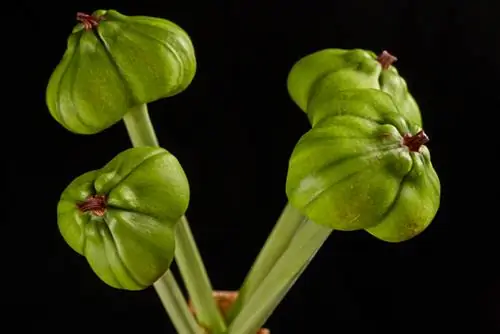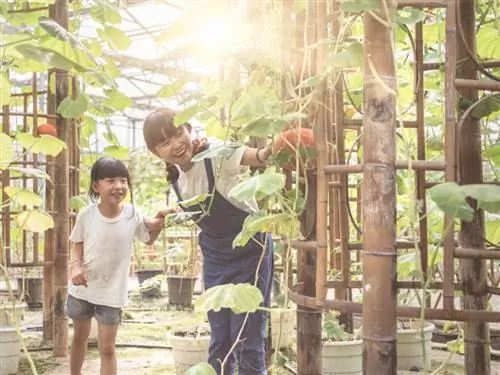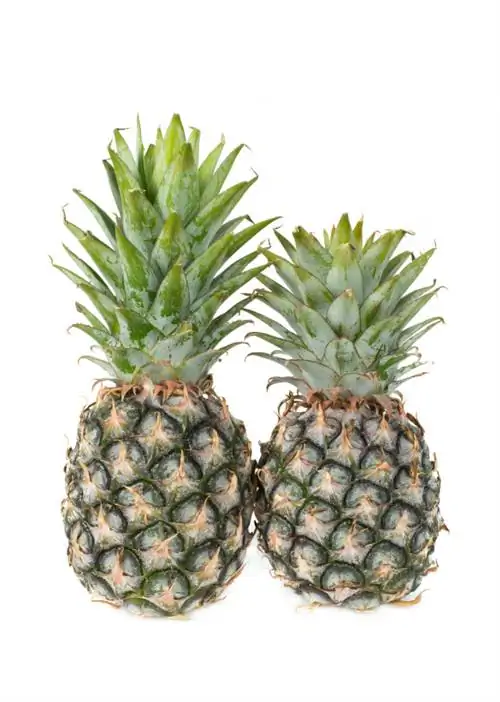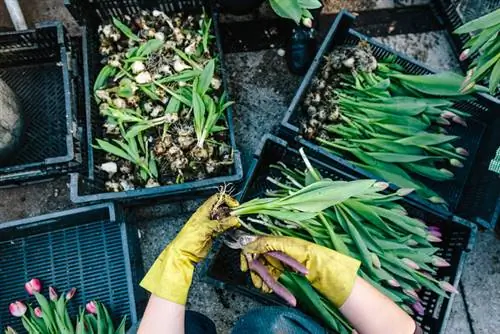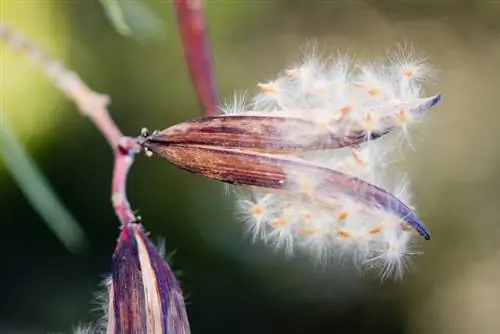- Author admin [email protected].
- Public 2023-12-16 16:46.
- Last modified 2025-06-01 06:02.
Their large capsule fruits are full of dark seeds. In this way, the amaryllis provides the ideal material for numerous offspring. As an ambitious hobby gardener, who can resist this invitation to propagate for free? We will explain to you here how to harvest and sow the seeds correctly.

How to harvest and sow amaryllis fruits?
The amaryllis fruit is harvested by carefully snapping off the stem and removing its bracts. The seeds are then allowed to dry for 1 to 2 days. The seeds are sown in a mixture of coconut fibers (€15.00 on Amazon) and cactus soil. The seeds are only lightly covered, about 0.5 cm, with sand or vermiculite and kept moist. Germination occurs within 14 to 21 days at room temperature.
Harvesting amaryllis fruit - this is how it works
Within 2 months after pollination, the plump fruit cluster proudly and unmistakably rises above the withered petals. As a rule, the individual fruit has 3 chambers in which the black seeds ripen. As a sure signal that the harvest is ready, the capsules gradually open and reveal the seeds. How to harvest correctly:
- Grasp a single knight star fruit on the stem between two (gloved) fingers
- Bend the capsule on the former flower stem to the side
- Carefully pull open the bracts to remove the seeds
Place the seeds on a plate so that they can dry for 1 to 2 days. Please apply as little pressure as possible to the seed leaves when carrying out any work so as not to damage the embryo inside. When handling a poisonous knight star, do not forego the protection of gloves.
The fresher the seeds, the higher the germination rate
If Ritterstern seeds are sown within a few days of harvest, you will benefit from a germination rate of up to 80 percent. A mix of coconut fibers (€15.00 on Amazon) and cactus soil has proven to be an excellent substrate. Since these are light germinators, sieve the seeds to a maximum depth of 0.5 cm with sand or vermiculite and water with a fine spray. Under the protection of a transparent hood, germination occurs within 14 to 21 days at warm room temperatures.
Tip
Without pollination, not a single fruit grows on Ritterstern. Since busy insects as natural pollinators rarely find their way onto the windowsill, the gardener acts as their representative. From the third day after the flowering period begins, take a cotton swab. Use this to transfer the yellow pollen to the upright, creamy white pistil.

